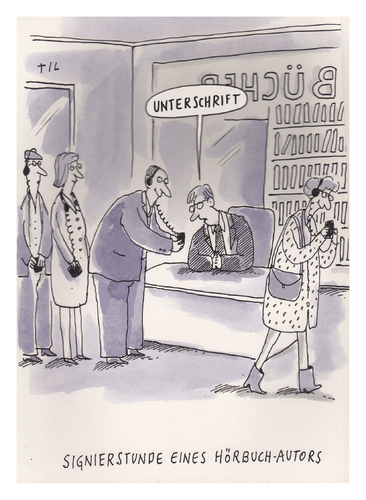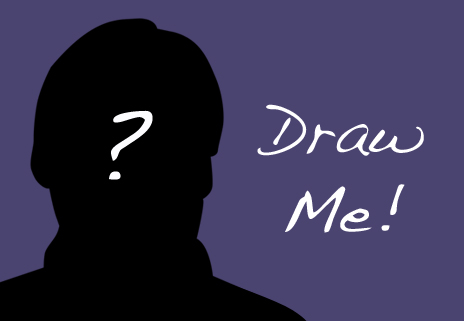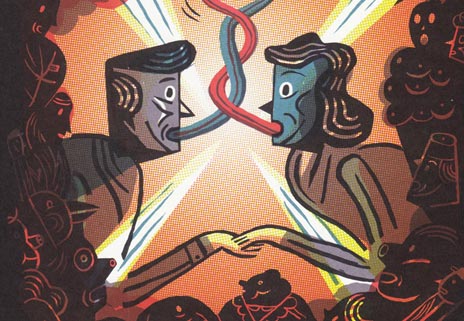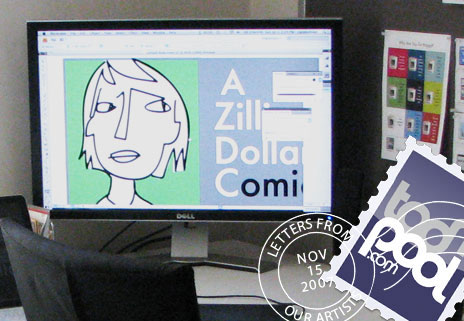The first issue of the “New Yorker” was published 85 years ago – on February 21, 1925. That’s 85 years of outstanding cartoons by artists like Chas Addams or Saul Steinberg. I spent quite a bit of time with the “Complete Cartoons” anthology in our local library. Til Mette, to me, is Germany’s most “New Yorkeresque” cartoonist – in both style and humor. I felt pretty sure that he must have his own special relation to the magazine – after all, he even spent some time living in New York City. Hence this interview.
![]() Til, you lived in New York for a while… How did you end up there?
Til, you lived in New York for a while… How did you end up there?
My wife was offered a job in Manhattan in 1992 , so we moved to New York City and lived there for 14 years.
Can you remember the first time you read an issue of the “New Yorker”? Did the cartoons appeal to you in some kind of special way?
That was when I was still very young. My uncle studied theology in New York in the Fifties and had the New Yorker at home. I was always impressed by the cartoons. I guess that’s how I learned English – by trying to get the jokes.
Would you say that there is some kind of quality or a special kind of humor that all the different people drawing for the New Yorker share?
Yes, I do. But I think it’s not the cartoonist, it’s the editor’s choice that creates the “New Yorker style”. These cartoons did not change very much the last 85 years. Some cartoons from the Thirties or Forties by Alan Dunn or Chas Addams could have been done today. They are old and modern at the same time.
So, how would you describe that style of cartoons that several generations of editors seem to agree on?
There is not one single style of cartoons in the New Yorker but the most common style would be the black and white one panel social cartoon with its caption underneath.
Did these cartoons teach you anything about how to do your own cartoons?
Oh yes. I love that dry and witty humor. The quintessential New Yorker cartoon is timeless, poetic, silly and satirical. My all-time favorite is Art Spiegelman’s cartoon where he proves that Jews do the best anti-Semitic jokes. This was his comment about the Iranian Holocaust cartoon contest some years ago.
 How can you teach yourself to be “timeless, poetic and silly”? .. Well, seriously, how do you apply features you admire to your own cartoons?
How can you teach yourself to be “timeless, poetic and silly”? .. Well, seriously, how do you apply features you admire to your own cartoons?
That will always be one of the biggest mysteries in our job. If I knew, I would quit drawing and start a zen buddhist cartoon school. But in the future I guess you just wait until Google comes up with the timeless-poetic-silly app, copy and paste it to your cartoon and..bingo!
Is there a German equivalent to New Yorker cartoons?
The New Yorker magazine is a very unique paper, but Germany’s Stern magazine, with its sixty-one year tradition of presenting cartoons prominently as part of their trademark comes close. And last not least there are some great Geman cartoonists that draw in this “New Yorker” style, like Rudi Hurzlmeier, Rattelschneck, Freimut Woessner, Detlev Beck and Bernd Zeller.
Last question: Have you ever sent in a cartoon to the New Yorker?
In the early nineties I tried to get into the New Yorker for about a year. You have to send them twenty cartoons per week. In the end I still got rejected but also received some encouraging notes attached to the rejections. At that time I applied to Stern magazine and a bit later I got a contract offer. Since then I have focused on being a Stern cartoonist.
Thanks for your time!
© toonpool.comTags: anniversary, The New Yorker, Til Mette




Great interview.
I learned English and (US) English humor by reading the New Yorkers and a Ches Addams book of my father.
Fortunately Til Mette is a Stern cartoonist, not a stern cartoonist (hihi).
very interesting!